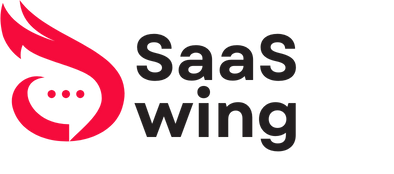Design tools have evolved immensely. They now offer powerful features for creators.
Understanding these advanced features can significantly enhance your workflow. Modern design tools are packed with capabilities that go beyond basic functions. These features help streamline tasks, improve precision, and boost creativity. Whether you are a graphic designer, web developer, or digital artist, knowing what these tools offer can elevate your work.
Advanced features like AI integration, real-time collaboration, and extensive libraries can transform your design process. This post will explore the cutting-edge functionalities that make today’s design tools indispensable. Get ready to discover how these features can help you create stunning designs more efficiently.
Introduction To Advanced Design Tools
Design tools have evolved significantly in recent years. These tools now offer advanced features that enhance creativity and productivity. Understanding these tools is crucial for modern designers.
Evolution Of Design Software
Design software has come a long way from basic drawing programs. Initially, designers used simple tools like paintbrushes and pencils. Early software offered limited options for editing and customization.
Today, advanced design tools provide a vast array of features. They include vector graphics, 3D modeling, and AI-powered enhancements. These tools support various design needs, from web design to architectural plans.
Here is a comparison of basic and advanced features:
| Feature | Basic Tools | Advanced Tools |
|---|---|---|
| Drawing Tools | Basic shapes | Customizable vectors |
| Color Options | Limited palette | Millions of colors |
| 3D Modeling | Not available | Advanced 3D tools |
| AI Enhancements | Not available | AI-powered suggestions |
Importance In Modern Design
Advanced design tools are essential in today’s competitive market. They offer efficiency and precision, allowing designers to create intricate designs with ease. This is important for meeting client expectations and industry standards.
These tools also facilitate collaboration. Many advanced tools support cloud-based workflows. This means multiple team members can work on a project simultaneously, improving productivity and creativity.
Here are some benefits of using advanced design tools:
- Increased efficiency
- High precision
- Enhanced collaboration
- Greater creative freedom
In summary, understanding and using advanced design tools is crucial. They offer numerous features that can significantly enhance the design process.
Enhanced User Interfaces
Advanced design tools now offer Enhanced User Interfaces that make the design process smooth and efficient. These improved interfaces simplify complex tasks, providing designers with intuitive navigation and customizable workspaces. Below, we explore these features in detail.
Intuitive Navigation
A key aspect of advanced design tools is their intuitive navigation. This feature allows designers to move through the software with ease. The navigation menus are logically arranged, making it simple to find tools and options.
Some common elements of intuitive navigation include:
- Clearly labeled icons
- Easy access to frequently used tools
- Search bars for quick tool discovery
These elements reduce the learning curve for new users, increasing productivity from day one. Even complex tasks become manageable with a well-organized interface.
Customizable Workspaces
Another significant feature is customizable workspaces. Designers can tailor their workspace to suit their needs. This flexibility ensures that all necessary tools are within reach.
Customizable workspaces often include options such as:
- Drag-and-drop panels
- Adjustable toolbars
- Saveable workspace layouts
These features allow designers to create an environment that enhances their workflow. Being able to save and switch between different layouts adds efficiency, especially for those working on multiple projects.
Overall, enhanced user interfaces in design tools lead to a more efficient and enjoyable design experience. By offering intuitive navigation and customizable workspaces, these tools cater to the diverse needs of designers.
Ai-powered Features
Today’s design tools are more advanced than ever. Thanks to AI-powered features, designers can work faster and smarter. These features bring automation and intelligence to the design process. Let’s explore some of the key AI-powered features in modern design tools.
Automated Design Suggestions
Automated design suggestions are a boon for designers. They provide instant feedback and ideas. AI algorithms analyze your design and suggest improvements. This helps in maintaining consistency and balance.
These suggestions can range from layout changes to color adjustments. The tool examines the elements and offers tweaks. This reduces the guesswork and enhances the design process.
Here are some benefits of automated design suggestions:
- Save time with quick fixes.
- Improve design quality.
- Maintain consistency across projects.
Intelligent Image Editing
Intelligent image editing is another powerful feature. AI-powered tools can enhance images with minimal effort. They can identify objects, adjust lighting, and correct colors automatically.
Designers can use these tools to retouch images quickly. The AI understands the context and makes precise edits. This means less manual work and more polished results.
Some key features of intelligent image editing include:
- Automatic object removal.
- Background replacement.
- Color correction and enhancement.
These features make image editing faster and more efficient. They help designers achieve professional results with ease.

Credit: www.youtube.com
Collaborative Capabilities
Collaborative Capabilities in design tools have transformed the way teams work together. These features enable designers to collaborate efficiently and creatively. Here, we explore two key aspects of these capabilities.
Real-time Collaboration
Real-time collaboration allows multiple users to work on the same project simultaneously. This feature enhances productivity and creativity.
- Instant Feedback: Team members can give and receive feedback instantly.
- Live Updates: Changes made by one user are visible to all participants in real-time.
- Seamless Communication: Built-in chat and comment sections help keep everyone on the same page.
Cloud-based Storage
Cloud-based storage ensures that design projects are accessible from anywhere. It also offers significant advantages in terms of security and collaboration.
| Feature | Benefit |
|---|---|
| Anywhere Access | Design files are accessible from any device with internet. |
| Automatic Backups | Projects are automatically saved, preventing data loss. |
| Version History | Users can track changes and revert to previous versions easily. |
These features make design tools more robust and user-friendly. They foster a collaborative environment that enhances creativity and efficiency.
Advanced Typography Tools
Typography is a key element in design. Advanced typography tools provide designers with powerful features to enhance their projects. These tools help create unique, professional, and visually appealing text. Let’s explore some advanced features in typography tools.
Custom Font Creation
Custom font creation allows designers to create their own fonts. This feature provides creative freedom and ensures brand consistency. Here are some important aspects:
- Unique Identity: Custom fonts help brands stand out.
- Consistency: Maintain a uniform look across all platforms.
- Flexibility: Tailor fonts to suit specific needs.
Tools like FontForge and Glyphs make custom font creation easy. Designers can create, edit, and refine fonts to perfection. This process involves:
- Sketching the basic design.
- Digitizing the sketch.
- Refining the vector paths.
- Kerning and spacing adjustments.
Variable Fonts
Variable fonts are a recent innovation in typography. They offer flexibility and efficiency in web design. Here’s why variable fonts are important:
- Flexibility: One font file can contain multiple variations.
- Performance: Faster load times with smaller file sizes.
- Adaptability: Adjust weight, width, and other attributes on the fly.
Variable fonts use @font-face rule in CSS to implement different styles. For example:
@font-face {
font-family: 'ExampleFont';
src: url('examplefont.woff2') format('woff2');
font-weight: 100 900;
font-stretch: 50% 200%;
}
This code shows how a single font file can handle multiple weights and stretches. This makes it versatile for responsive design. With variable fonts, designers can achieve a wide range of styles without loading multiple font files.

Credit: www.freepik.com
3d Design And Prototyping
3D design and prototyping have changed how we create and test products. These advanced features allow designers to visualize their ideas in three dimensions. They can build realistic prototypes without needing physical models. This process saves time and resources. It also helps in catching errors early. Let’s explore two key aspects of 3D design and prototyping.
3d Modeling Tools
3D modeling tools have become essential in modern design. These tools help create detailed models. They offer various features like:
- Real-time rendering
- Parametric design
- Mesh modeling
These tools let designers build complex shapes with ease. They also provide a better understanding of the product’s structure. Some popular 3D modeling tools include:
| Tool | Key Feature |
|---|---|
| Blender | Open-source and versatile |
| Autodesk Maya | Industry standard for animation |
| SketchUp | Easy to use for beginners |
Using these tools, designers can create accurate models. This helps in understanding how the final product will look and function.
Interactive Prototypes
Interactive prototypes are another crucial aspect of 3D design. These prototypes allow users to interact with the design. They can test the features and functionality. Some benefits of interactive prototypes include:
- Identifying usability issues
- Gathering user feedback
- Saving development costs
Creating interactive prototypes involves several steps. These include:
- Designing the user interface
- Adding interactive elements
- Testing with users
Tools like Figma and InVision help in building these prototypes. They offer features such as:
- Drag-and-drop interface
- Real-time collaboration
- Easy sharing options
Interactive prototypes make the design process more efficient. They ensure the final product meets user needs and expectations.
Integration With Other Software
Design tools are becoming more advanced, offering seamless integration with other software. This feature enhances the workflow, allowing designers to work efficiently. Below are some key aspects of this integration.
Seamless Import/export
Design tools now support seamless import/export of files from various formats. This feature saves time and reduces errors. Here are some common formats:
- JPEG
- PNG
- SVG
By supporting these formats, designers can easily move files between different tools. This capability ensures that the quality of the design remains intact.
Plugins And Extensions
Another powerful feature is the use of plugins and extensions. These add-ons enhance the functionality of design tools. Some popular plugins and extensions include:
- Color pickers
- Font libraries
- Image optimizers
- Prototype tools
These plugins and extensions can be easily installed and configured. They provide additional capabilities that are not available in the core tool. This flexibility allows designers to tailor their tools to specific needs.
By integrating with other software, design tools help streamline the creative process. This integration is vital for maintaining efficiency and quality in design projects.

Credit: medium.com
Performance Optimization
In the realm of design tools, performance optimization is crucial. This ensures seamless operation and saves valuable time. Design professionals prioritize tools that offer optimized performance for a smoother workflow. Two key aspects of performance optimization are faster rendering times and efficient resource management.
Faster Rendering Times
One of the standout features of advanced design tools is faster rendering times. Reduced rendering time enhances productivity and allows designers to focus on creativity. Here are some benefits:
- Quick feedback: Instant previews of designs.
- Less waiting: More time for refining work.
- Improved efficiency: Complete projects faster.
Design tools achieve faster rendering through optimized algorithms and powerful hardware support. This combination ensures a seamless experience, even with complex projects.
Efficient Resource Management
Efficient resource management plays a vital role in performance optimization. Design tools that manage resources well run smoothly even on less powerful systems. Key aspects include:
| Feature | Benefit |
|---|---|
| Memory Optimization | Reduces lag and crashes. |
| CPU Usage Management | Ensures smooth multitasking. |
| Disk Space Management | Prevents storage issues. |
Tools with efficient resource management utilize system resources wisely. This ensures a consistent and reliable performance, enhancing the overall design process.
Future Trends In Design Tools
As technology advances, design tools are evolving at a rapid pace. The future trends in design tools are bringing innovative features that will change the way designers work. These advanced features are making design processes faster, more intuitive, and more immersive.
Virtual Reality Integration
Virtual Reality (VR) is becoming a significant part of design tools. Designers can now create and interact with their designs in a 3D space. This allows for a more immersive experience and a better understanding of spatial relationships. Imagine being able to walk through your design before it is built. This capability helps in identifying potential issues early in the design process.
VR integration also enhances collaboration. Team members can experience the design together, making it easier to discuss and make decisions. This can lead to more creative solutions and better final products.
Increased Use Of Machine Learning
Machine learning (ML) is another trend shaping the future of design tools. ML algorithms can analyze vast amounts of data and provide insights that were previously impossible. This can help designers make more informed decisions and create better designs.
ML can also automate repetitive tasks, saving designers time and effort. For example, ML can suggest design elements based on the project’s requirements or the designer’s past work. This allows designers to focus on more creative aspects of their work.
Another exciting application of ML in design tools is predictive analytics. This can help designers predict how users will interact with their designs. This insight can lead to more user-friendly and effective designs.
| Feature | Benefit |
|---|---|
| Virtual Reality Integration | Immersive experience, better collaboration |
| Machine Learning | Data-driven insights, automation, predictive analytics |
These future trends in design tools are not just about adding new features. They are about enhancing the design process and making it more efficient and effective. Embracing these trends will help designers stay ahead in a competitive field.
Frequently Asked Questions
What Are Advanced Features Of Design Tools?
Advanced features in design tools include vector editing, layers, smart guides, and collaboration options. These features enhance productivity and creativity.
How Do Design Tools Improve Efficiency?
Design tools improve efficiency by offering intuitive interfaces, automated tasks, and customizable templates. These features help streamline design processes.
Can Design Tools Support Team Collaboration?
Yes, many design tools support team collaboration with real-time editing, shared libraries, and version control. These features foster teamwork.
Are Advanced Design Tools User-friendly?
Yes, advanced design tools are user-friendly with intuitive controls, tutorials, and customer support. They cater to both beginners and professionals.
Conclusion
The advanced features of design tools make creating impressive designs easier. They offer user-friendly interfaces, enhancing productivity. Designers can now experiment with various elements effortlessly. These tools also support collaboration, enabling teams to work better together. Exploring these features can improve design quality significantly.
Stay updated with the latest advancements to keep your designs fresh and innovative. Keep practicing, and you’ll see noticeable improvements in your work. Happy designing!







